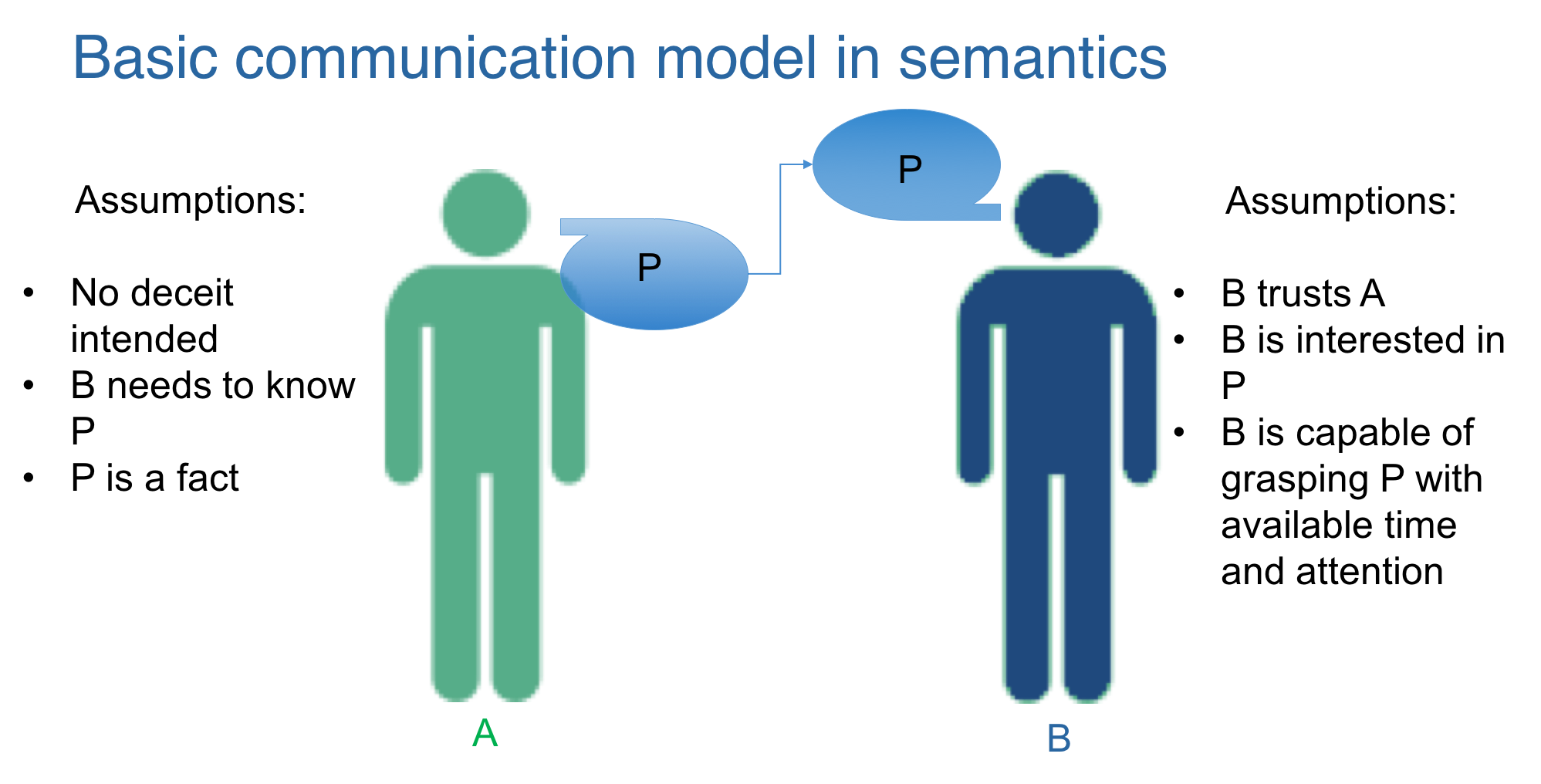I recently gave a keynote address to the Content Strategy Applied conference in London. My talk was well received, but when I went to post the slides, I realized that much of the talk was more TED-style: speaking largely without visuals. So I started working on some basic visuals to help people understand the deck without my voice. The visuals will help when I reprise the talk at Intelligent Content Conference in Las Vegas on March 30.
As I mocked up the visuals, it occurred to me that one in particular would really help people who struggle with a key insight at the core of our book Outside-In Marketing: Why push marketing fails in digital. The book sets up outside-in marketing as a kind of pull marketing, focusing on audience needs rather than marketing agendas. But folks who grew up in the push world still struggle to implement it. Theirs is the world of buying eyeballs and hoping some small percentage of the people attached to the eyeballs do something positive, or at least come away from the experience with a favorable brand impression.
In short, push marketing fails in digital because it assumes an opt-out, lean-back mode. But digital is an opt-in, lean-in medium. In digital, few buyers fall for clever tricks or turns of phrase. Digital is a literal medium that only works if you build trust and loyalty with your audience by helping them get the information they need. The audience is in control, and anything you do to try to seize control will lose their trust.
Here I will attempt to deconstruct how digital is different from other more passive media by unpacking the six assumptions push marketing relies on that don’t work in digital.
The presumption of relevance
The six assumptions have their origins in theories of communication from the philosophy of language and linguistics. They come down to what I call the presumption of relevance, the idea that we can make meaningful communication regardless of relevance. The simple truth is that unless communication is relevant, it can never be meaningful.
The theorists who developed this model thought we needed to start by simplifying the basic use case to presume relevance. What they failed to consider is that in natural language, their simplifying assumption almost never works. Relevance is at the heart of our language use. We interpret everything we see and hear on the basis of the degree to which it is relevant. And the faster it comes at us, the more aggressively we filter out irrelevant messages. This is why push marketing doesn’t work in digital, because messages come at us so fast, we tune them out unless they are obviously relevant.
Here is the basic model people assume:
I’m not saying that marketing professionals believe everything about this model, or have even ever studied it. What I’m saying is that the model is so pervasive in our culture that we assume it without ever considering that it might not work. For example, we are all taught that if we write really compelling copy, the audience won’t be able to help themselves. They’ll be attracted to underlying messages like moths to flame. Marketers with this teaching can’t understand why they craft such compelling copy and nobody ever sees it. The reason is their assumptions don’t work in digital.
Assumption 1: No deceit intended
I laughed out loud when I tried to apply this assumption to marketing. I am reminded of a conference talk in which the presenter asked, “How many people have tasted Corona?” Most of the hands went up. “How many like the taste?” Most hands came down. “How many people still buy Corona?” More hands went up. Why? Because the ads of an ice bucket full of beer on the beach with two seats straddling it make people want that beer regardless of the taste. “That,” said the conference speaker, “is the essence of marketing: Making people believe something contrary to fact, and changing their buying behavior on that basis.”
I am not that cynical. But there is a grain of truth in what the presenter had to say. Marketers use hype and spin to sell their products. That’s what they were trained to do. At the very least, they will not use any negative spin, regardless of how true it might be. Their mantra: keep telling the good stories and hopefully you can influence sales.
It’s no wonder that digital audiences are skeptical about traditional marketing messages, especially in B2B environments where it is their job to be skeptical. They rarely take what you say on face value, unless you provide something valuable and devoid of spin first. This is why I like to start with “what is” content for new prospects. If you give them vendor-neutral content to help them start their buyer journeys, they just might take the next steps in their journeys with you.
Assumption 2: The audience needs to know
We call it push marketing because it involves pushing content on people who don’t need it. How many push messages start with these words: Urgent, Limited-time Offer, Time-sensitive Material, etc.? Push marketers think they have to trick people into thinking that they need to know something. In this environment, content assets become offers, with manufactured urgency. Short-term digital campaigns often take this approach.
It just doesn’t work in digital. Users will consume the content they need on and in their terms, when the timing is right for them. That’s why we emphasize creating evergreen content that attracts prospects to engage with it when they’re ready. If you string these experiences together in a helpful way, you’ll develop trust and loyalty in your audience, two things push marketing rarely cultivates.
Assumption 3: The message is factual
Well, marketing messages can’t be demonstrably false. But push messages often bend the truth. For example, “Four out of five dentists surveyed…” says nothing about how the research was done, how many dentists were surveyed, etc. In offline media, marketers get away with this more often than in digital. Part of it is the more skeptical nature of the digital audience. Also, if every fact can be quickly checked online, you simply can’t get away with junk facts, let alone “alternative facts.”
This is why we recommend complementing your content with infographics from reliable sources—preferably trusted third-party sources—you can link to. Digital audiences will click those links. That’s one of the best ways to earn their trust. And don’t worry about keeping them on your site. They will leave one way or another. But they won’t come back if you push junk facts on them.
Assumption 4: The audience trusts the content provider
Hubspot studies show that more people trust corporate information sources now than they did, say, in the age of black-hat SEO. This is especially true of corporate blogs. But you certainly can’t presume that your audience will trust you. Trust must be earned, it is rarely given. Perhaps this is why corporate blogs tend to do better than other content types. The best ones feature experts who aren’t writing to spin the corporate line but rather, to give valuable information.
Still, don’t treat your whole audience as though they don’t trust you at all. If you cookie them on first landing, you can give them a more personalized experience on subsequent visits, one that assumes a little more trust each time. Eventually, they will be ready to engage with someone one-on-one.
Assumption 5: The message is interesting to the audience
This is the main problem with push marketing. Marketers project their interest in a message on the audience without first checking to see what might be interesting to them. “If it’s compelling to me, it must be compelling to the audience.” No. It must be compelling to people who are like you. But your customers are not like you. Finding out what they are really like is job one.
Some colleagues of mine claim customers being interested in a core message is like a litmus test: if they are interested in the message, they are stronger prospects. I don’t think this is necessarily true. Interest in a message might just mean you are attracting a particular segment of the audience, rather than the whole audience. You can’t presume that any one segment is more likely to buy than any other. Better to attract the whole audience and let the data decide which segments are more likely to buy.
This is why we emphasize keyword research as the primary way to learn the audience. It captures the whole audience. Done well, it doesn’t just describe what they’re interested in, but why, and how they need to process the information. You can use social listening to get some advanced intelligence about which audience segments are more favorable to a product than others. But you still have to test these hypotheses with live website visitors.
Assumption 6: The audience can grasp the message in the time allotted
This is the most common mistake push marketers make. They interrupt clients and prospects, presuming that they have the time and attention to consume large files of content. They typically force users to fill out a form to download the content they push on them. This leads to 98% abandonment rates and higher. If they pay for the clicks, it’s all just click waste that does nothing to build trust with the audience.
Even if you don’t pay for the clicks, taking care to craft user experiences that lighten the cognitive load is the most effective way to win in digital. The first step is respecting the users’ time and attention. Don’t force them to scroll or click to determine that your experience is relevant to them. Give them visual cues to help guide their journeys. Nothing engenders trust more than excellent customer experiences.








